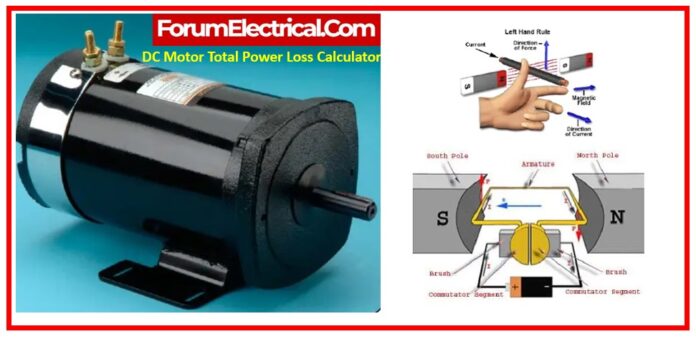The total power loss calculator for DC motors provides an estimate of the total power that is lost in a motor as a result of inefficiencies across its many components.
This calculation takes into factors such as
- Friction losses,
- Windage losses, &
- Electrical losses
respectively.
It does this by calculating the difference between the input power & the output power, taking into consideration the overall efficiency of the motor, and so determining the total amount of power that is lost as heat or in other forms that are not usable.
What does a DC motor’s total power loss mean?
The energy that is lost from a DC motor as heat or other types of non-useful power is referred to as the motor’s total power loss. It includes a wide range of losses, including mechanical losses (like friction in bearings) and electrical losses (such as resistance in windings), as well as losses resulting from windage & stray load losses. Together, these losses add to the motor’s declining overall efficiency & output power. The symbol for power loss is symbolized by Ploss.
Requirements to determine Power Loss in a DC Motor
Input Power
The entire power applied to the electrical DC motor from a source that is linked to it is known as input power. It is denoted by Pin.
Overall Efficiency
The Overall efficiency of an electrical machine’s internal systems is known as its overall efficiency. It is denoted by ηo.
Formula for Total Power Loss in DC Motor
Power Loss = Input Power – Overall Efficiency x Input Power
Ploss = Pin – ηo x Pin
Where,
Ploss – Power Loss in DC Motor (in Watt)
Pin – Input Power in DC Motor (in Watt)
ηo – Overall Efficiency
Click here for more Electrical Calculators









